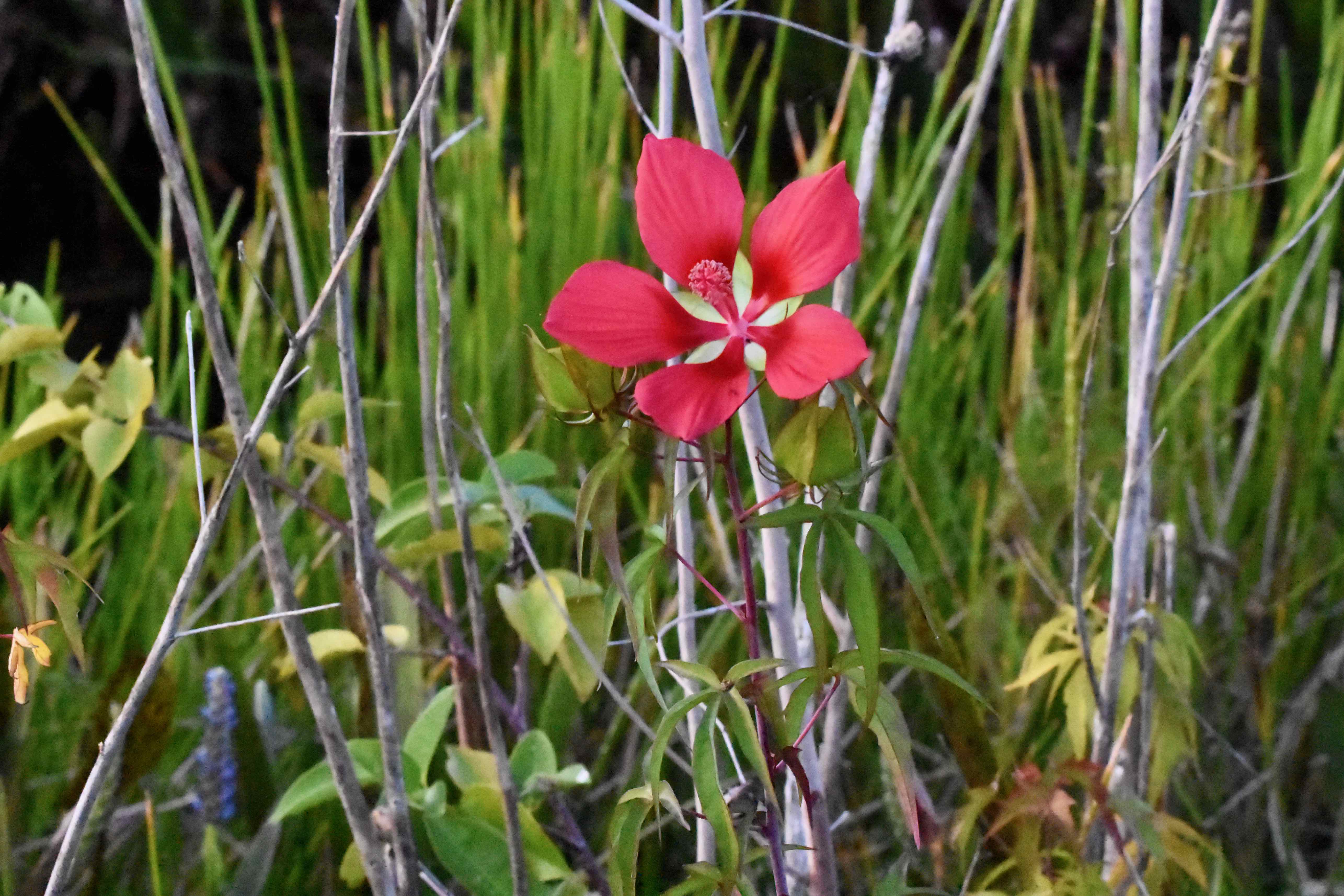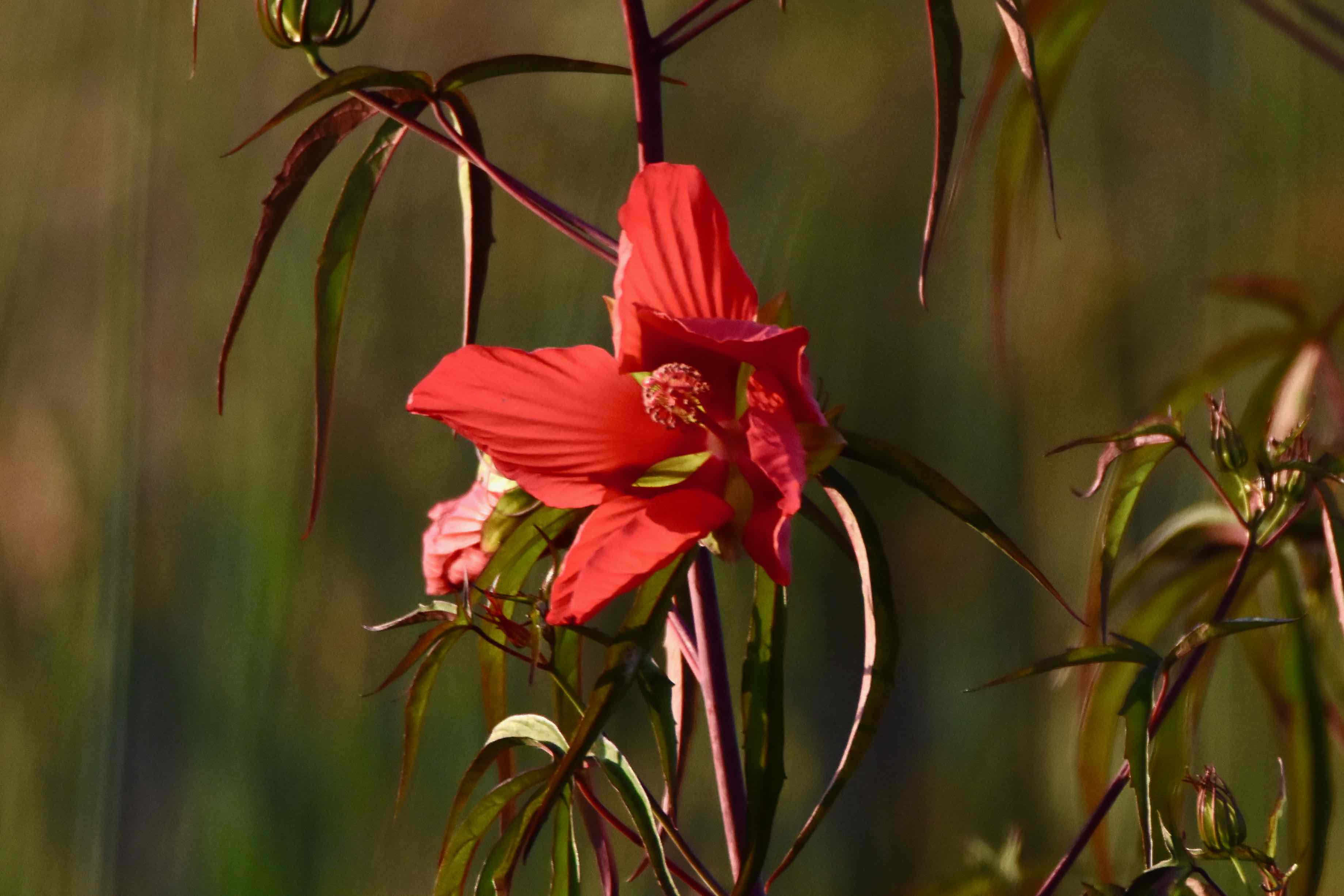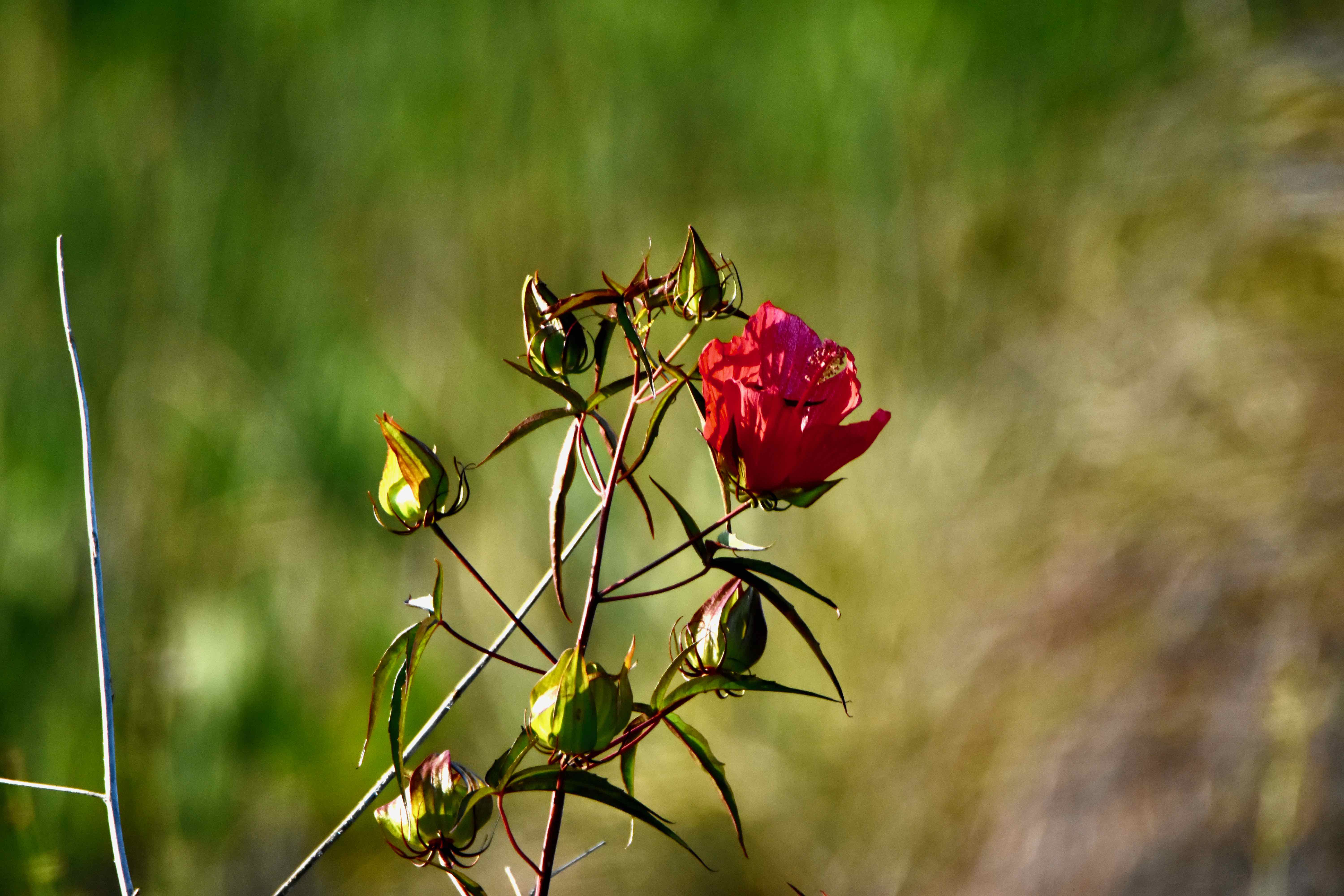
Scarlet rosemallow, photographed at Green Cay Nature Center, Boynton Beach, Palm Beach County, in November 2017.
This is the crown jewel of South Florida's wetlands, and a extraordinarily rare one. Hibiscus coccineus to scientists; either scarlet rosemallow or crimson rosemallow to the rest of us. The flowers are absolutely huge and as red hot as an August afternoon.
The Lady Bird Johnson Wildflower Center calls it "one of our loveliest native flowers." That's understating it in our eyes. The flower can span six inches or more and the plant can be eight feet tall, allowing it to stand like a beacon in a sea of green. There are other beautiful wetland flowers. Dixie Iris comes to mind. Golden canna is another. But their charms are much more subtle by comparison with the brash scarlet rosemallow.
Scarlet rosemallow is a Florida native, but its range within the state is a bit scattered through the Peninsula and the Panhandle. Within South Florida, specimens have been found and officially recorded in Collier, Broward and Martin counties. According to the Institute for Regional Conservation, scarlet rosemallow might be extirpated, or locally extinct, within the bounds of Broward.
The Institute for Regional Conservation has found it within two South Florida preserves, Jonathan Dickenson State Park in Martin County and Corkscrew Swamp Sanctuary near Naples in Collier. The IRC classifies scarlet hibiscus as critically imperiled within South Florida. The plants on this page were photographed at Green Cay Nature Center in Boynton Beach; although the plants are growing wild, we're guessing that the population there was the work of humans. Scarlet rosemallow is, however, thriving within Green Cay's bounds.
Scarlet rosemallow grows throughout the Southeast, as far north as Virginia and as far west as Arkansas and Louisiana. We get the general impression that nowhere within its range is it actually abundant, just not as rare is it here.
Scarlet rosemallow is a shrub that can grow as much as eight feet tall and is multi-stemmed. It blooms summer to fall — late May to the end of September by our observations. (We saw it in bloom as early as April during the spring of 2021, and we've seen it in bloom as late as January in one (weird) years.) Each flower lasts only a day, but the plants are constantly blooming. It is a perennial, but it drops its leaves and dies back each winter, resprouting come spring. As plants age, they produce additional stems each year. Both the leaves and stems have a red tinge to them. The leaves are large, about five or six inches across, have three, five or seven finger-like lobes that are finely serrated along the edges and come to a point. The lobes are palmated, meaning there's no tissue between them, unlike say the lobes on a maple leaf.
The brilliant blooms do attract their share of nectar lovers, particularly butterflies and red-loving hummingbirds. Unfortunately here in South Florida, there are no hummingbirds to attract — the only species to regularly visit the region — ruby-throated hummingbirds — do so in winter and spring when scarlet rosemallow isn't in flower. Gray hairstreak and painted lady butterflies are here year round, and use scarlet rosemallow as both a host plant and nectar source.
Parts of scarlet hibiscus are edible — the flowers are used in salads and teas, and are said to to have a tart taste. They're also rich in antioxidants. The leaves are edible in a salad or as greens. The tea supposedly has a calming effect.
Scarlet rosemallow is regularly used in landscaping, but obviously it does have its limitation. It is a wetland plant after all and while it can withstand some drought, its feet really need to be wet beyond what the typical yard can offer. There are also cultivars of scarlet rosemallow available on the market, including one called Lord Baltimore, which offers deep red flowers, and Alba, which has all white flowers.
Scarlet rosemallow is also known as the scarlet rose mallow, crimson rose mallow, wild red mallow, Texas star hibiscus, swamp angel, scarlet hardy mallow and marsh hibiscus. Scarlet rosemallow is a member of Malvaceae, which includes all hibiscus species and many others, including cotton.
Green Cay Nature Center



